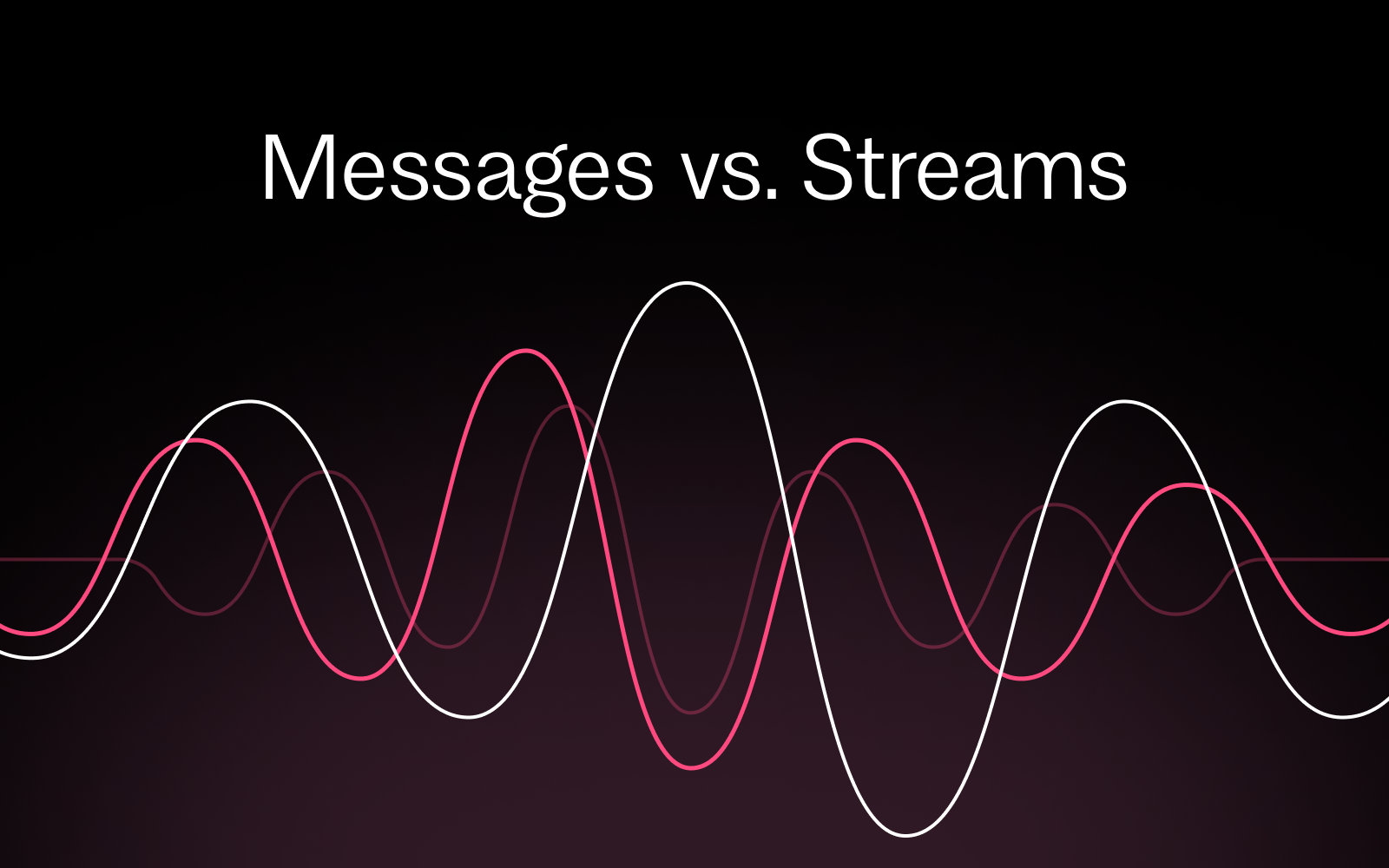Messages vs. Streams: Understanding the Foundation of Event-Driven Architecture


Event-driven architecture (EDA) has become a backbone of modern distributed systems, powering everything from e-commerce platforms to real-time analytics. Yet despite its widespread adoption, there’s a distinction that many developers overlook – one that can make the difference between an elegant, scalable system and a complex, brittle one.
Recently, Kurrent customer Rohit Harshvardhan, Director of Software Engineering at Bold Penguin, shared an insight on LinkedIn that perfectly captured this concept. His post highlighted something we see engineering teams struggle with all the time: the distinction between messages and streams.
At first glance, the difference might seem trivial. Both messages and streams carry data through your system, and both enable asynchronous communication between services. However, understanding their unique characteristics is important for making the right architectural decisions.
What’s the difference between messages and streams?
Messages are individual, self-contained packets of information. Think of them as digital letters: each one carries a specific piece of data from one part of your system to another. A message might represent:
- A user registration event
- An order confirmation
- A payment notification
- A system alert
Each message is discrete, meaning it stands alone and contains all the context needed to understand and act upon it. Messages have clear boundaries: they start, they contain their payload and they end.
Streams, on the other hand, represent continuous flows of related events over time. Rather than individual letters, think of streams as ongoing conversations. They capture the evolution of state and the sequence of events as they unfold. A stream might contain:
- All user activities on your platform
- Real-time sensor readings from IoT devices
- Financial market data updates
- Application performance metrics
Streams are about continuity and temporal relationships. The order matters. The timing matters. The ability to replay and analyze patterns over time is essential.
Why the distinction between messages and streams is important in EDA
Understanding whether you’re dealing with messages or streams fundamentally changes how you design your system. This isn’t just a theoretical distinction. It has profound practical implications that ripple through every layer of your architecture. Let’s look at three key areas where this choice shapes your technical decisions:
1. Storage and retrieval patterns
Messages often require traditional CRUD operations (create, read, update, delete). You might store them in a queue, process them and then discard them. The focus is on reliable delivery and processing.
Streams require append-only storage with the ability to replay from any point in time. You’re not just processing individual events; you’re maintaining a complete history that can be analyzed, replayed and used to reconstruct state.
2. Processing models
Message processing is typically stateless. Each message contains everything needed for processing, and messages can often be handled independently and in parallel.
Stream processing is inherently stateful. You need to maintain context across events, track windows of time and often perform aggregations or pattern matching across multiple events.
3. Scalability considerations
Messages can be scaled through traditional load balancing and partitioning strategies. Add more consumers, distribute the work and you’re done.
Streams require more sophisticated partitioning strategies that preserve ordering guarantees while still enabling parallel processing. The scalability patterns are fundamentally different.
Real-world systems demand both messaging and streaming
Here’s where it gets interesting: most real-world systems need both messages and streams. The challenge lies in building systems that can handle both seamlessly.
Consider an e-commerce platform where order placement generates discrete messages that trigger fulfillment workflows, while user behavior creates continuous streams that feed recommendation engines. Inventory updates are messages that need immediate processing, yet customer journey analytics require streams of interaction data to identify patterns over time.
Traditional approaches often force you to choose, creating unnecessary friction in your architecture. Message queues excel at discrete event processing but struggle with stream semantics, while stream processing platforms handle continuous data flows beautifully but can be overkill for simple message passing.
Kurrent’s event-native KurrentDB database understands both messages and streams as first-class citizens, eliminating this false choice, allowing you to store discrete messages with traditional message queue semantics while maintaining continuous streams with full replay capabilities. This unified approach lets you bridge between patterns when business logic requires it and scale each according to its unique requirements.
Making better EDA design decisions
When designing your next event-driven system, the key questions revolve around understanding your data’s true nature and your business requirements. You need to determine whether you’re dealing with discrete events that can be processed independently or continuous flows that require temporal analysis and pattern recognition. Consider your replay requirements and how your business logic maps to these patterns: some domains naturally think in terms of discrete transactions while others revolve around continuous processes that unfold over time.
The messages vs. streams distinction is a lens for understanding how data flows through your business processes. When your technology choices align with these natural patterns, complexity decreases and capabilities increase.
Event-driven architecture requires modeling your business processes in a way that’s both technically sound and conceptually clear. The best system won’t force you to choose between these paradigms but embrace both, allowing your architecture to naturally reflect the diverse patterns of your business domain.
When that alignment happens, your technology starts working with you instead of against you, and that’s the true power of getting the fundamentals right.
